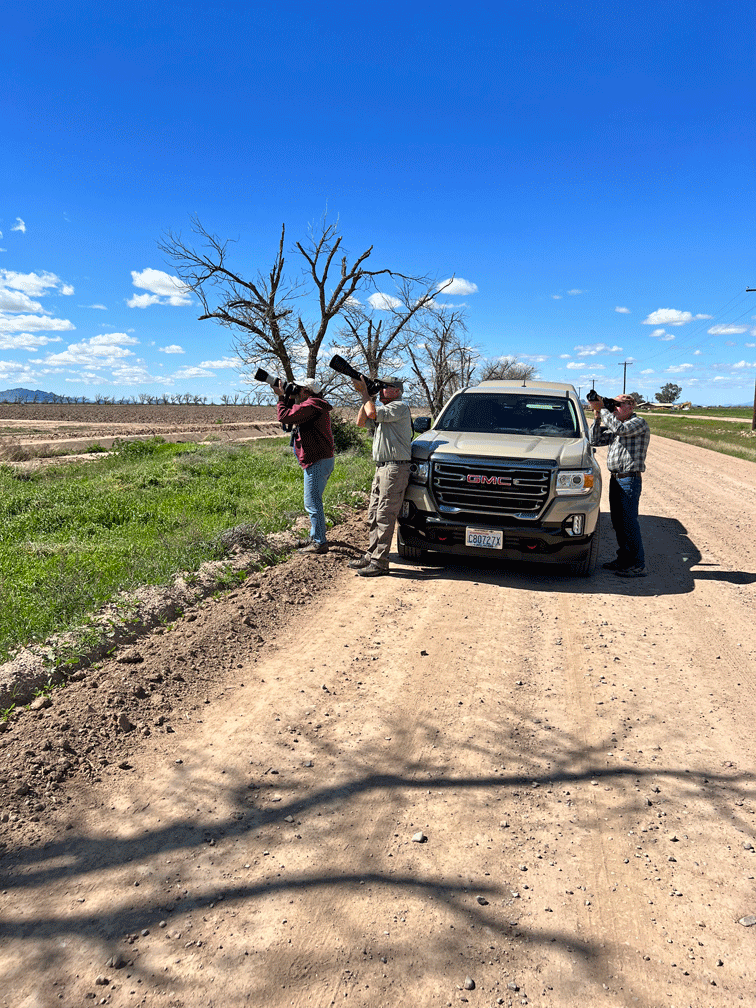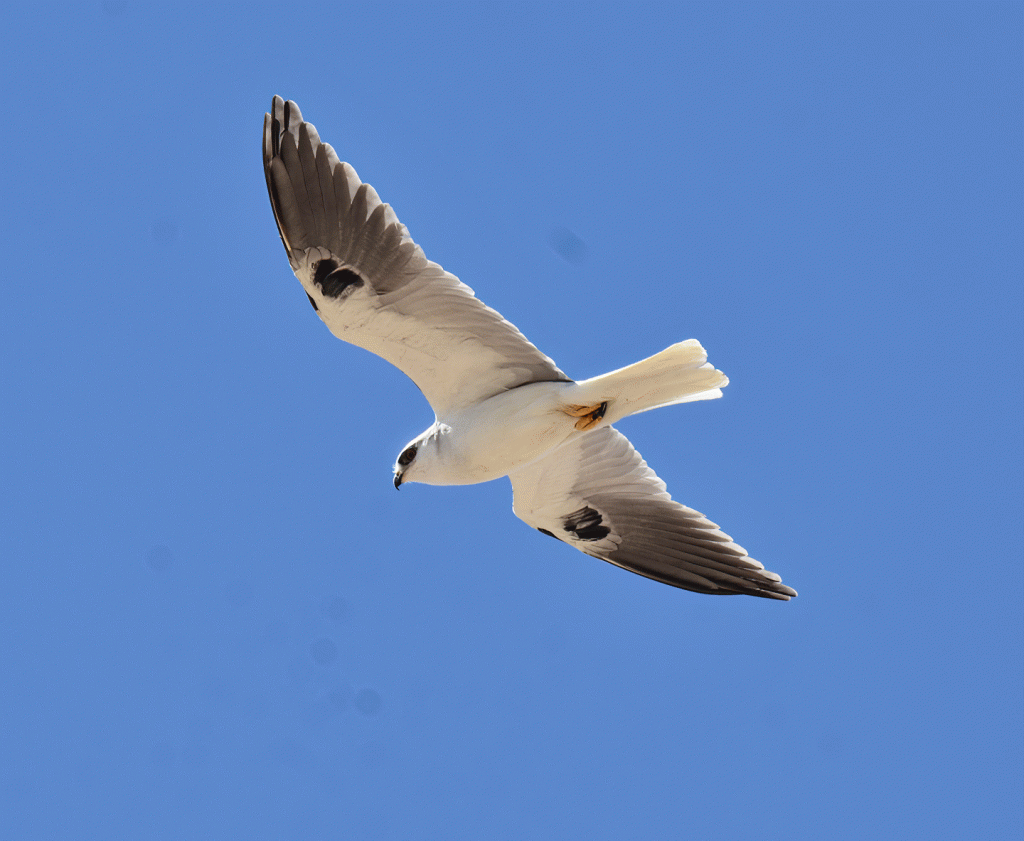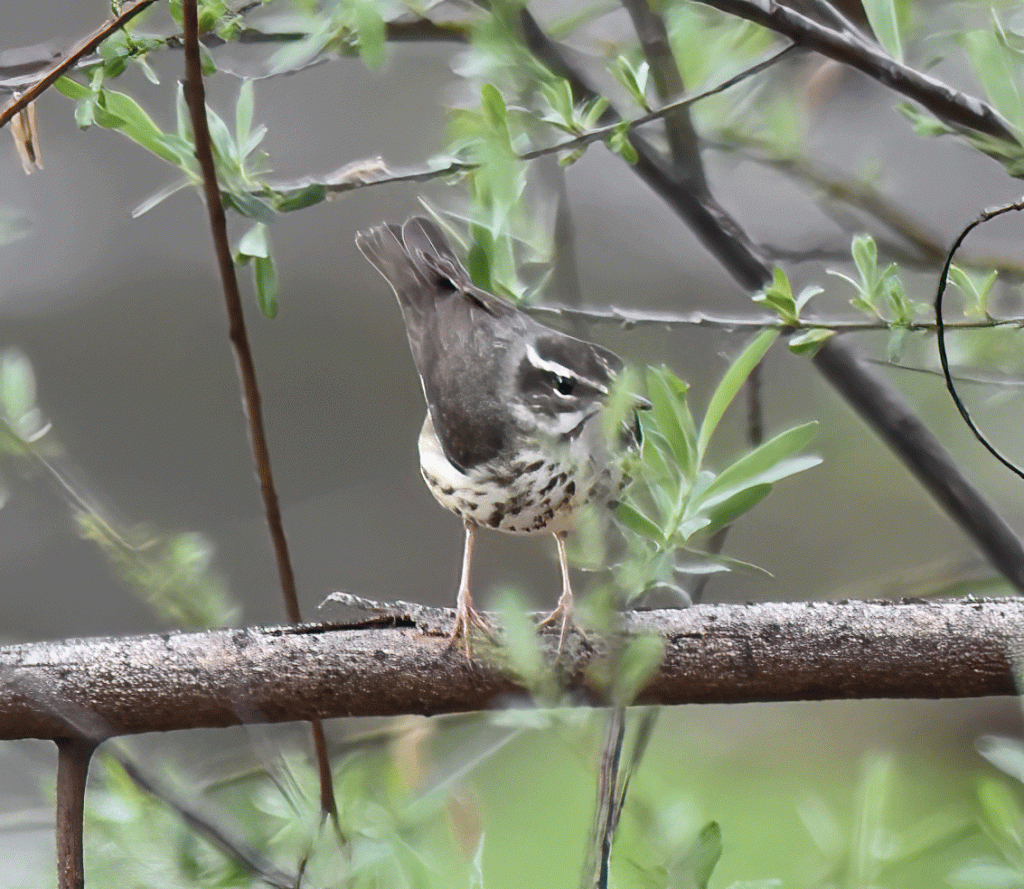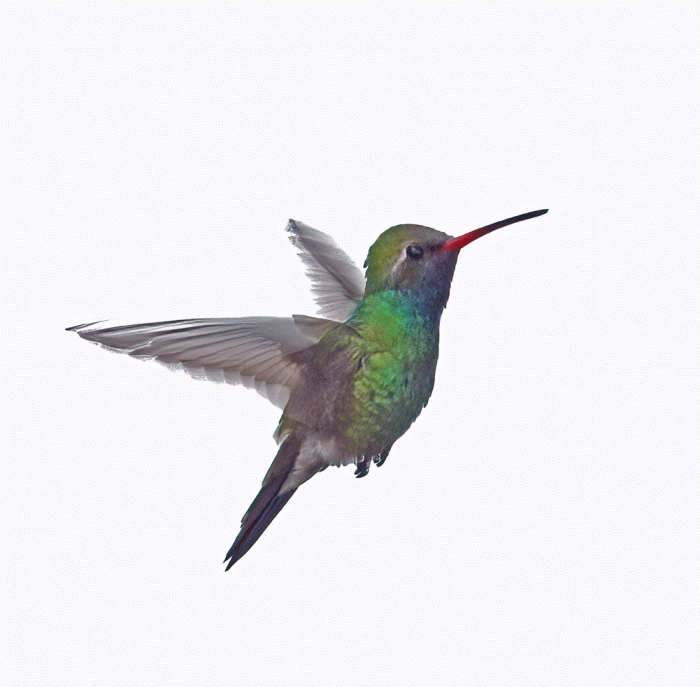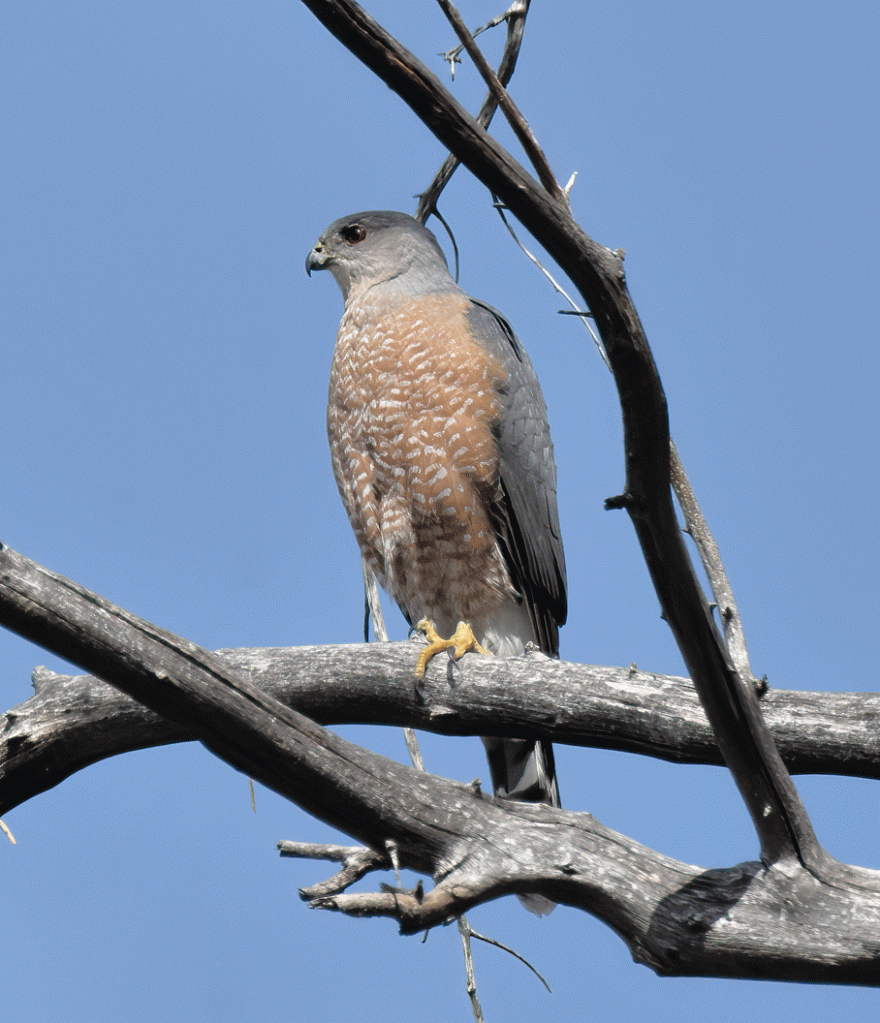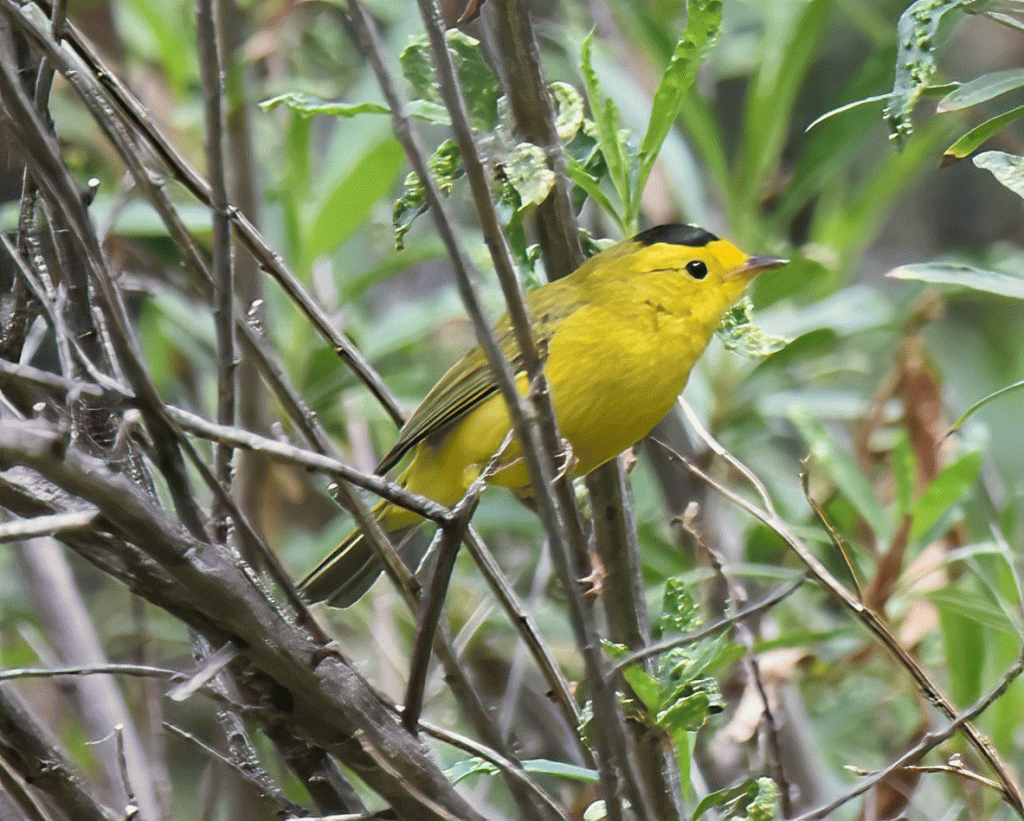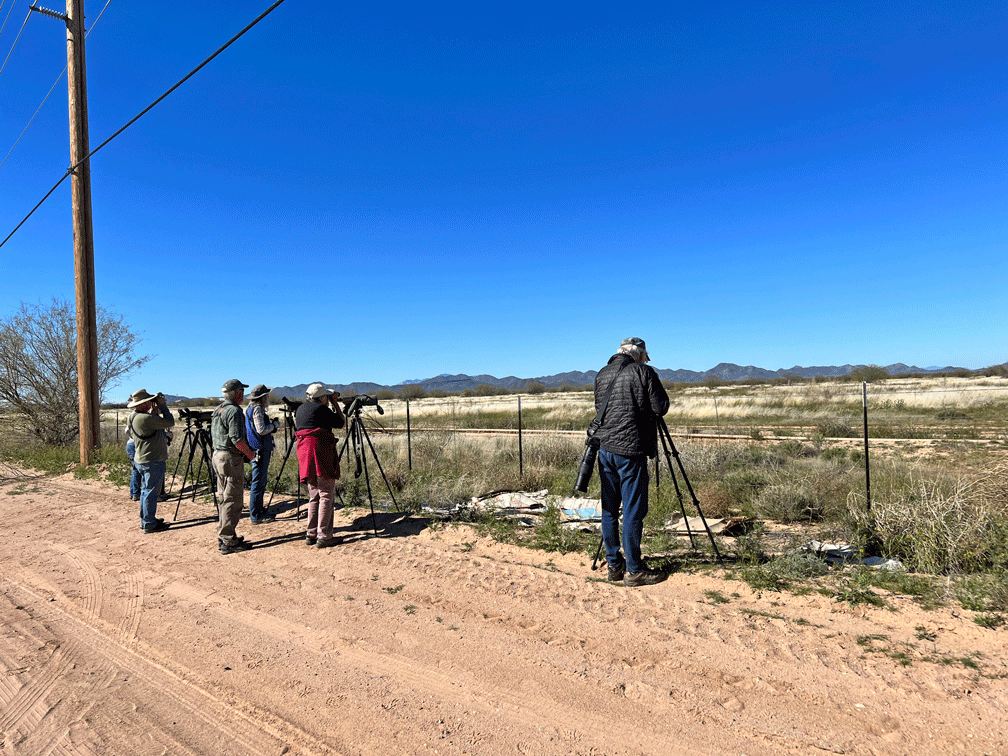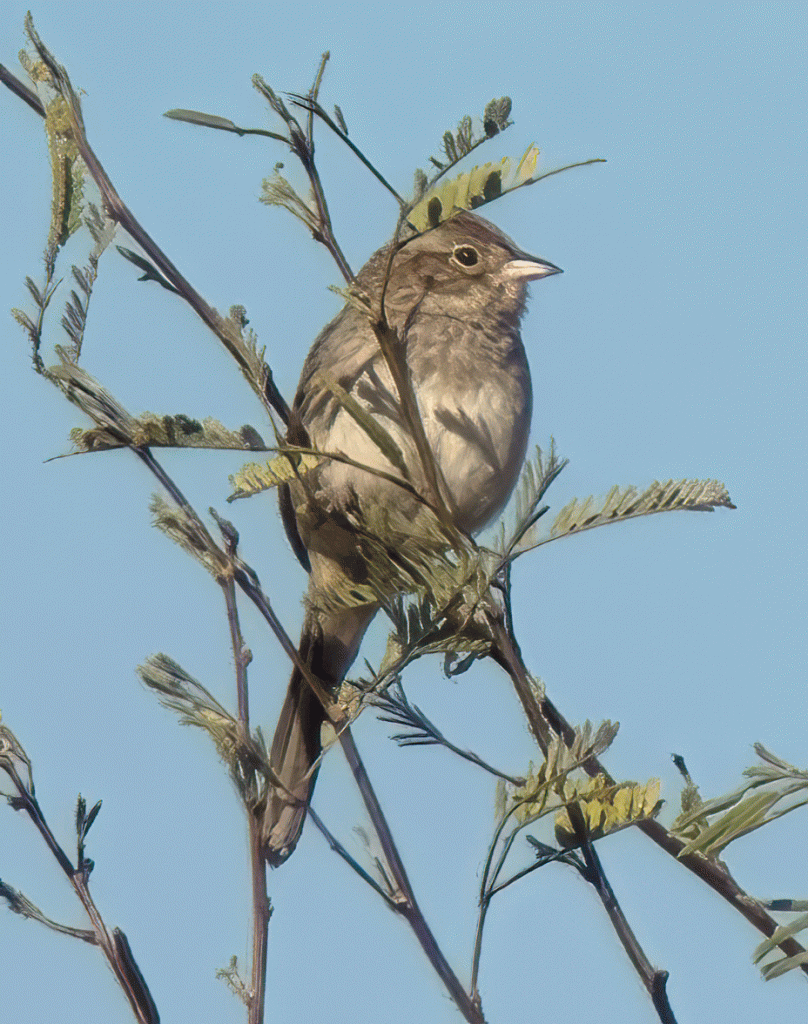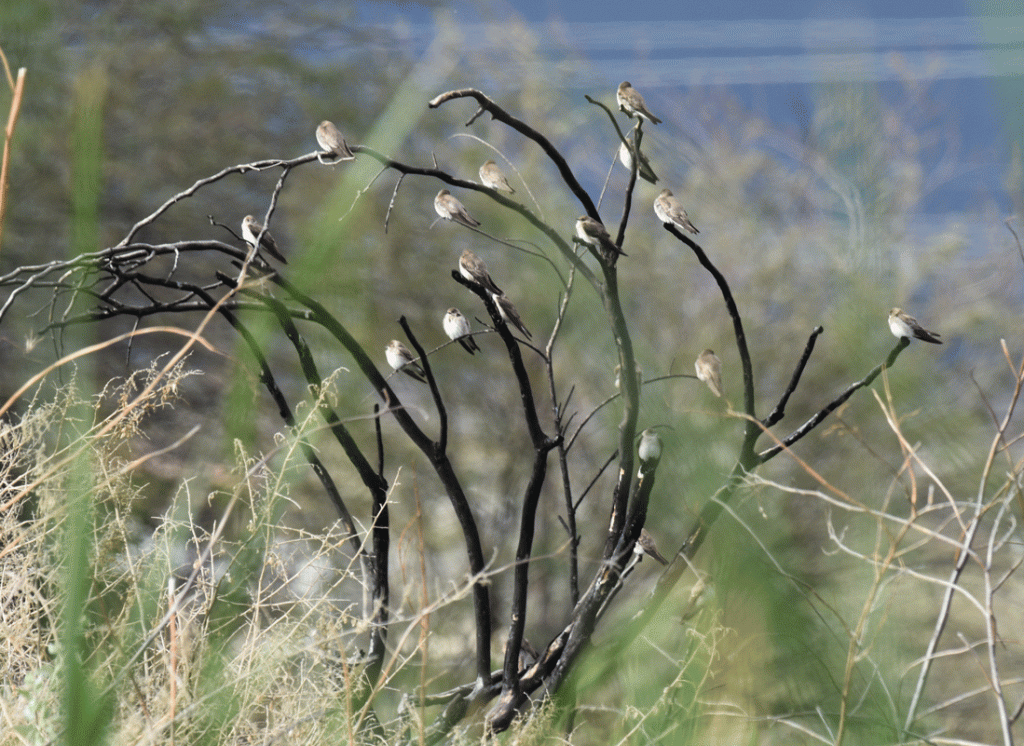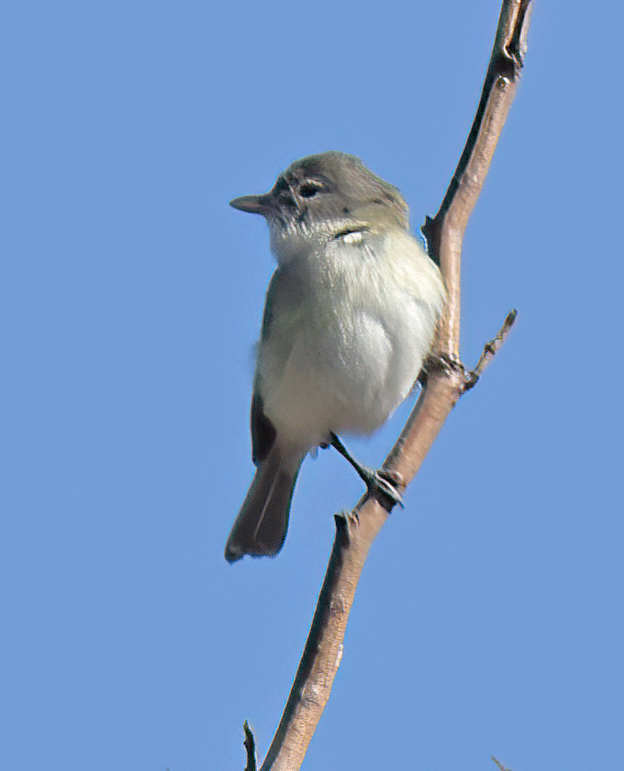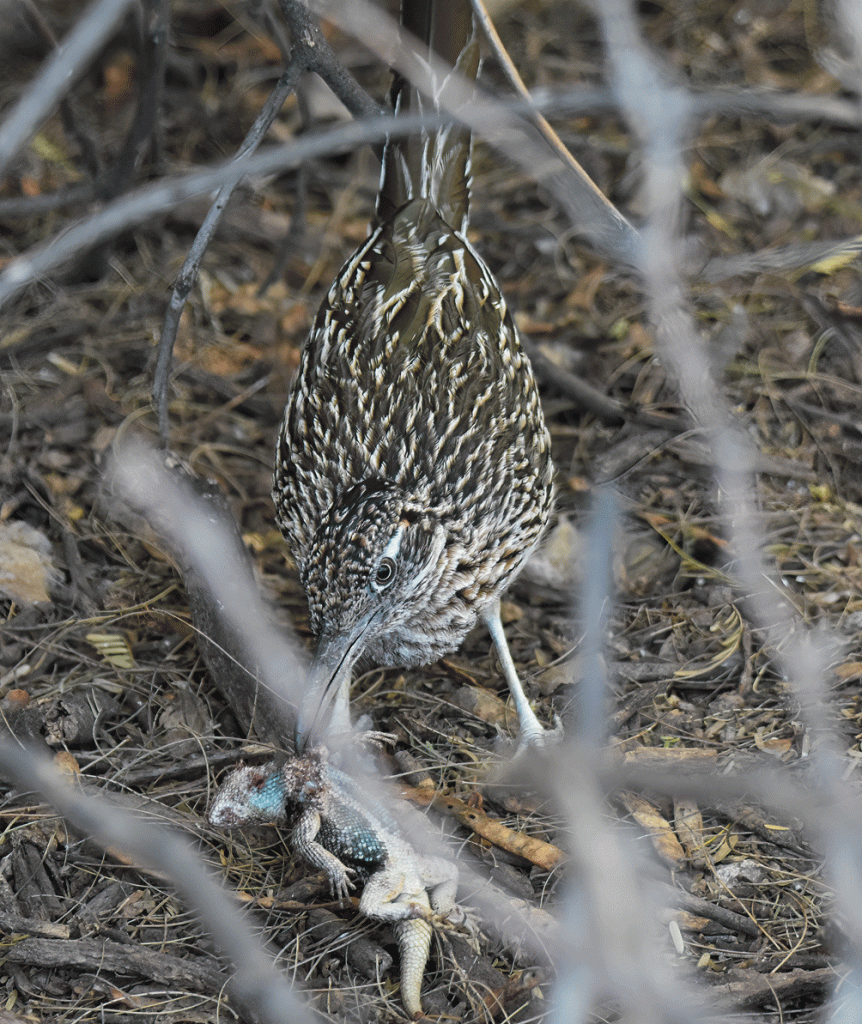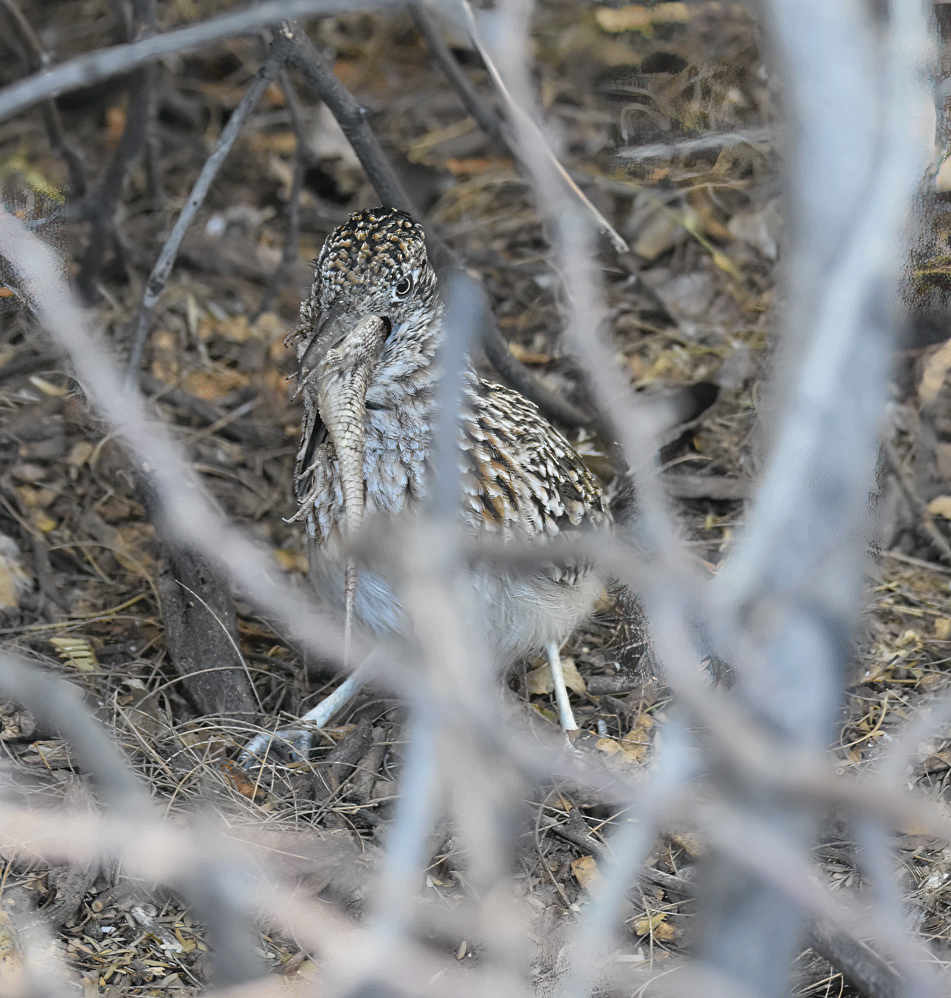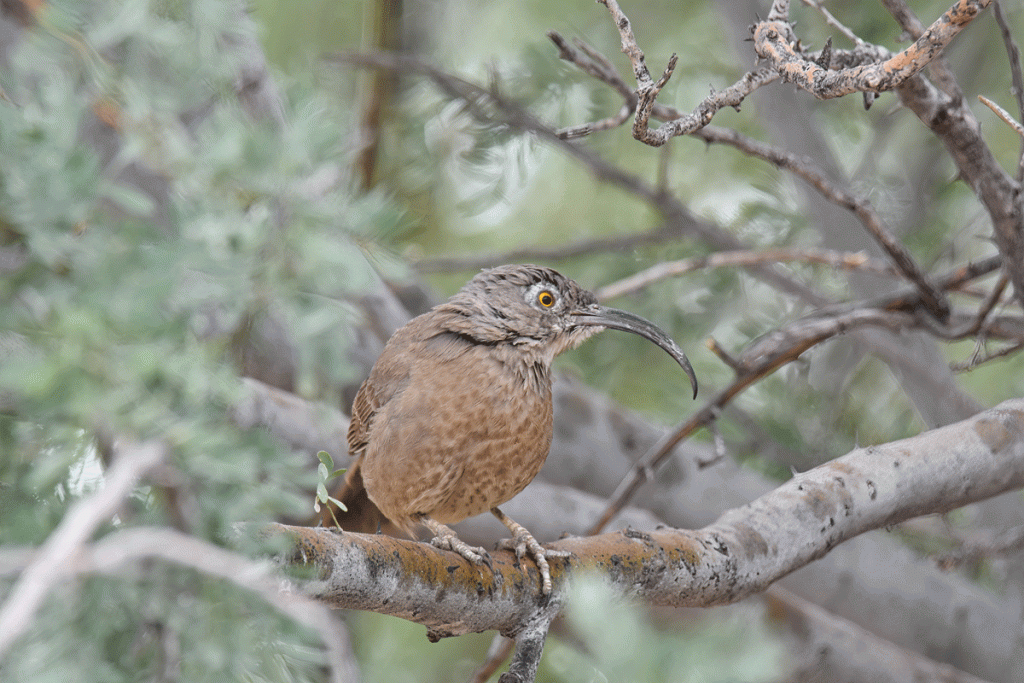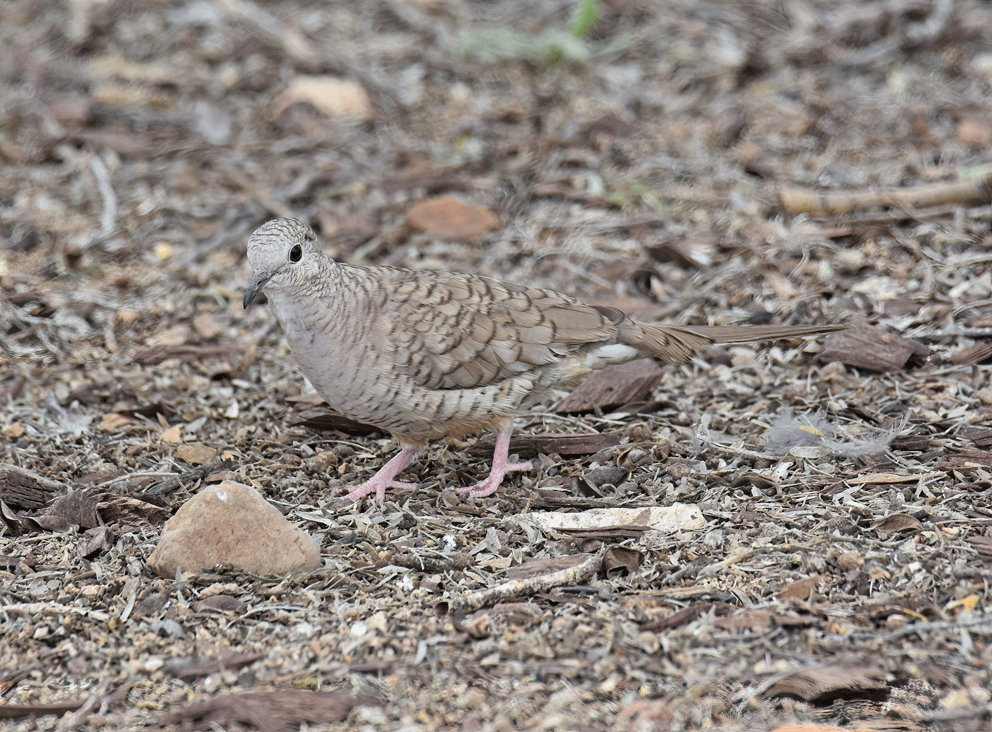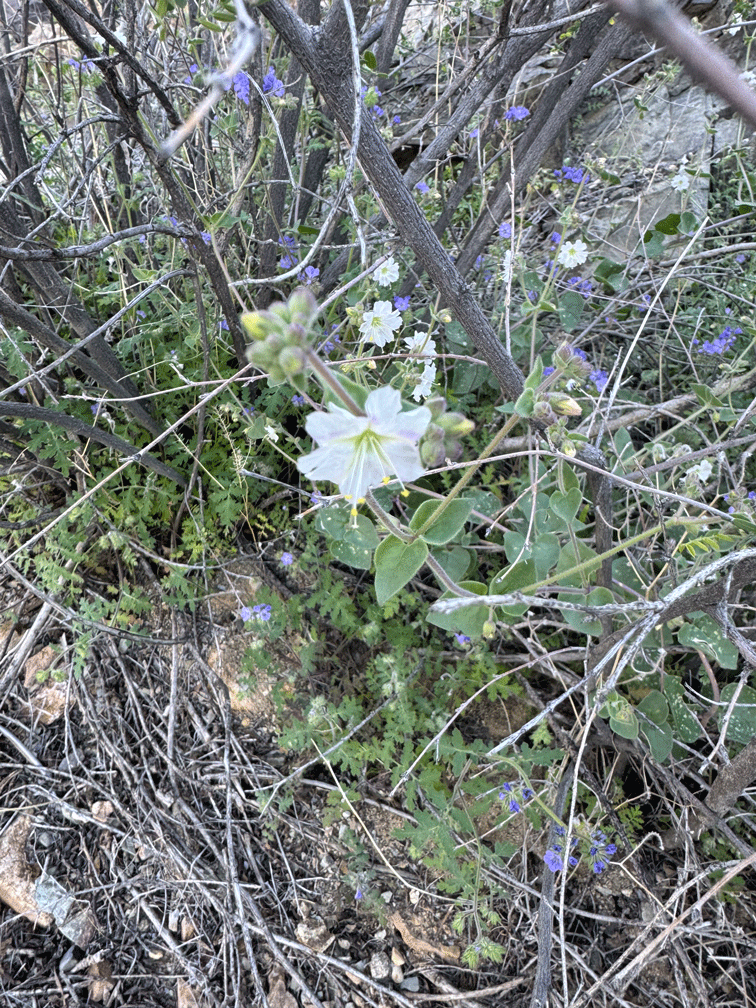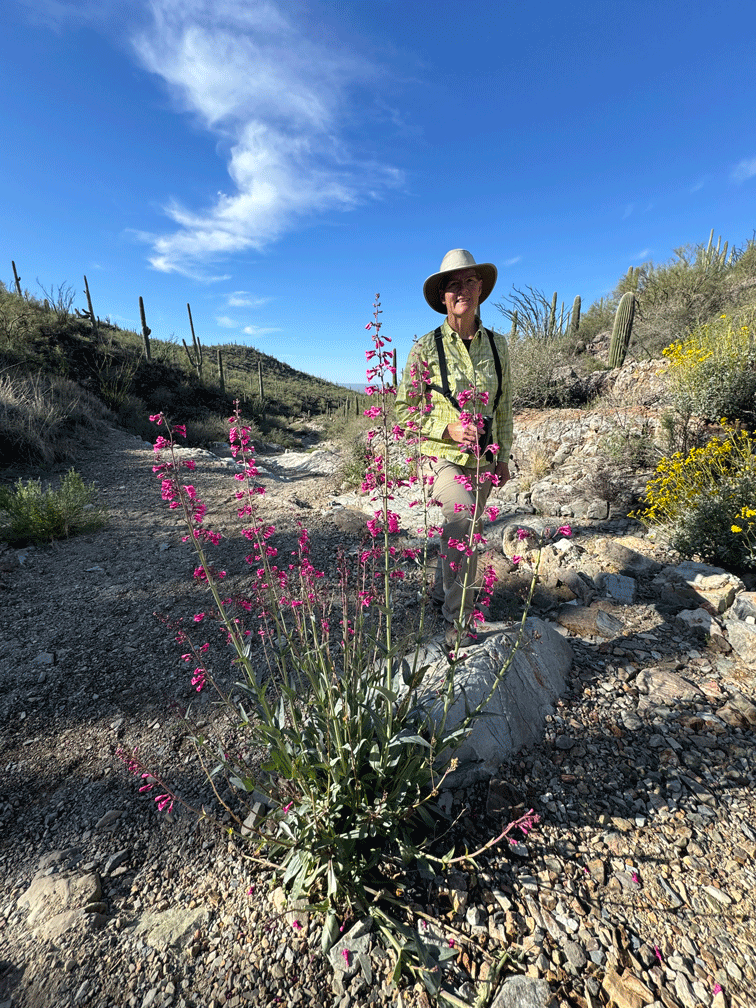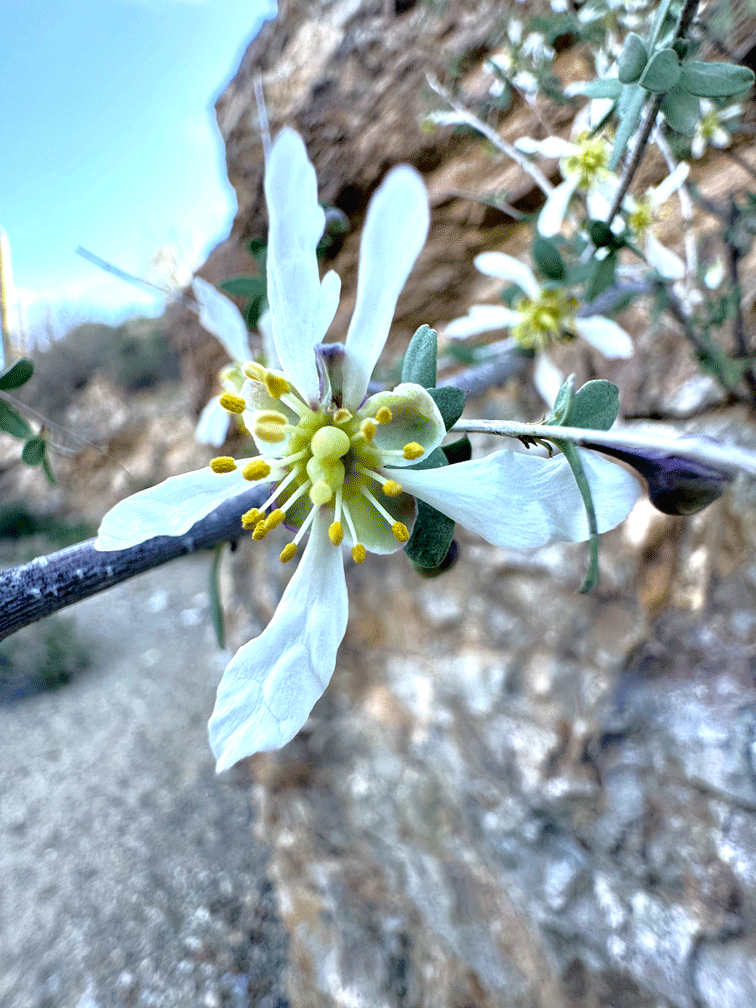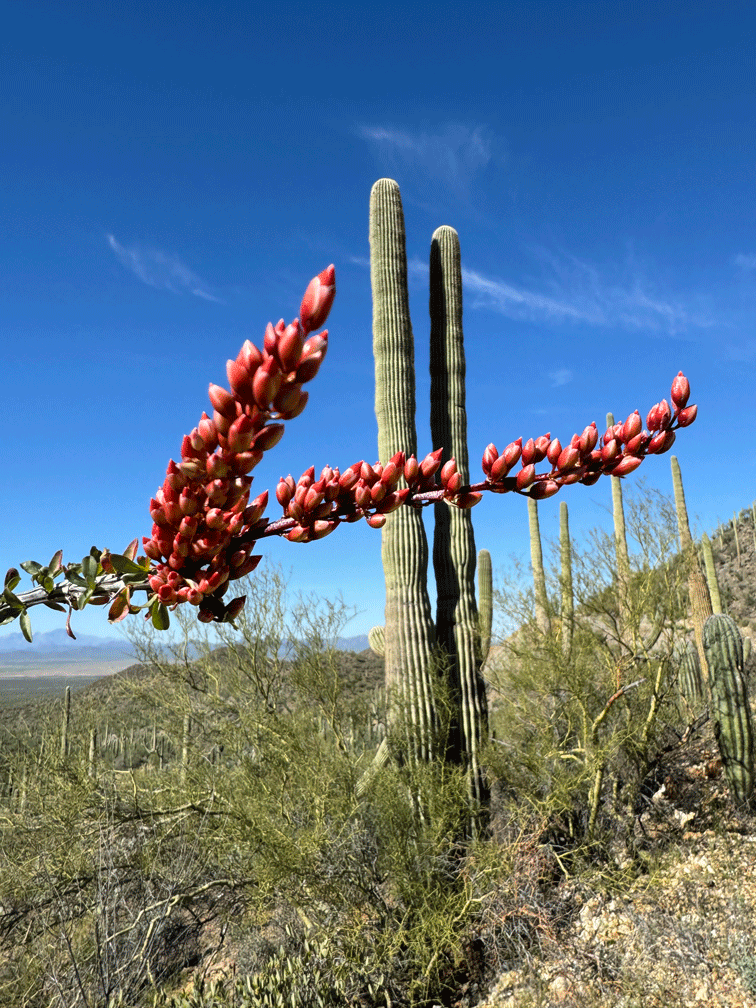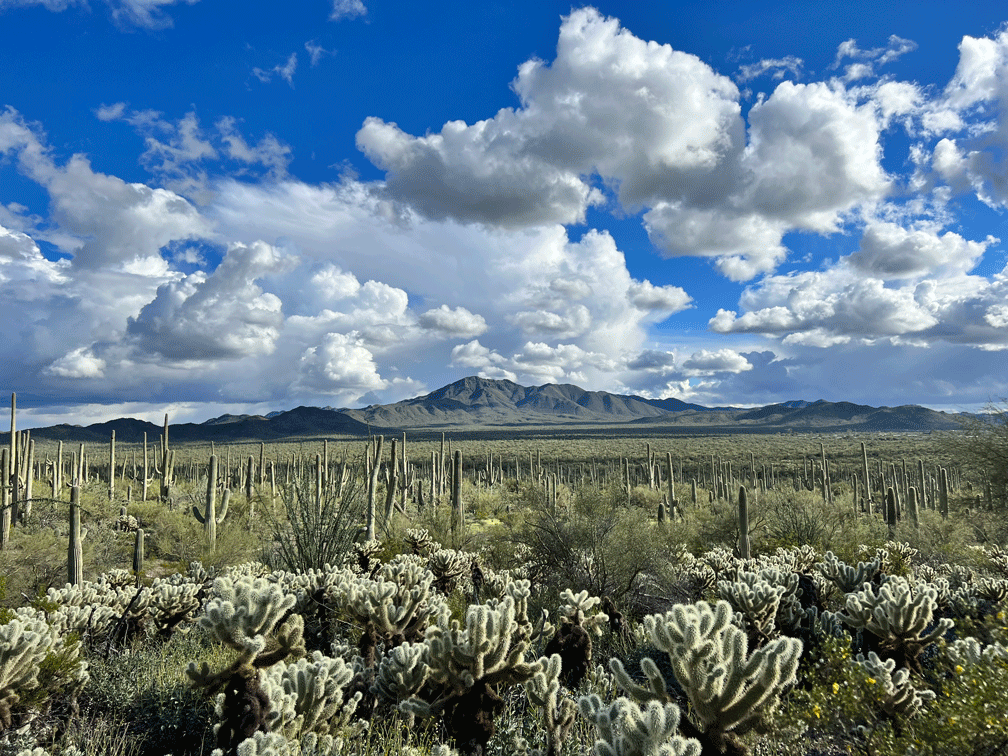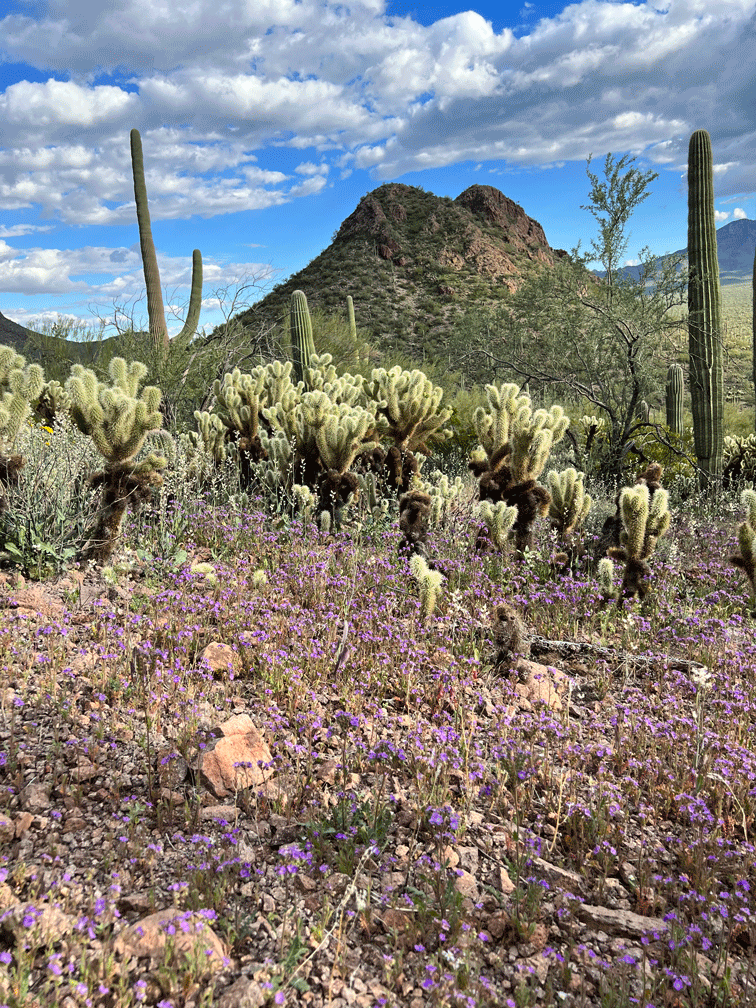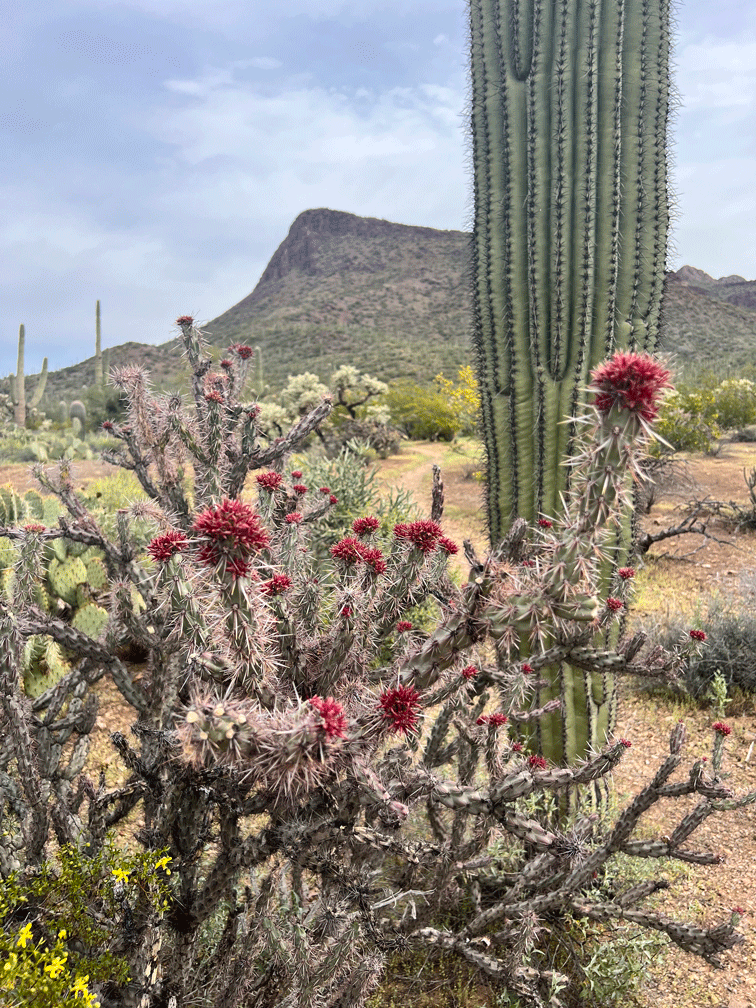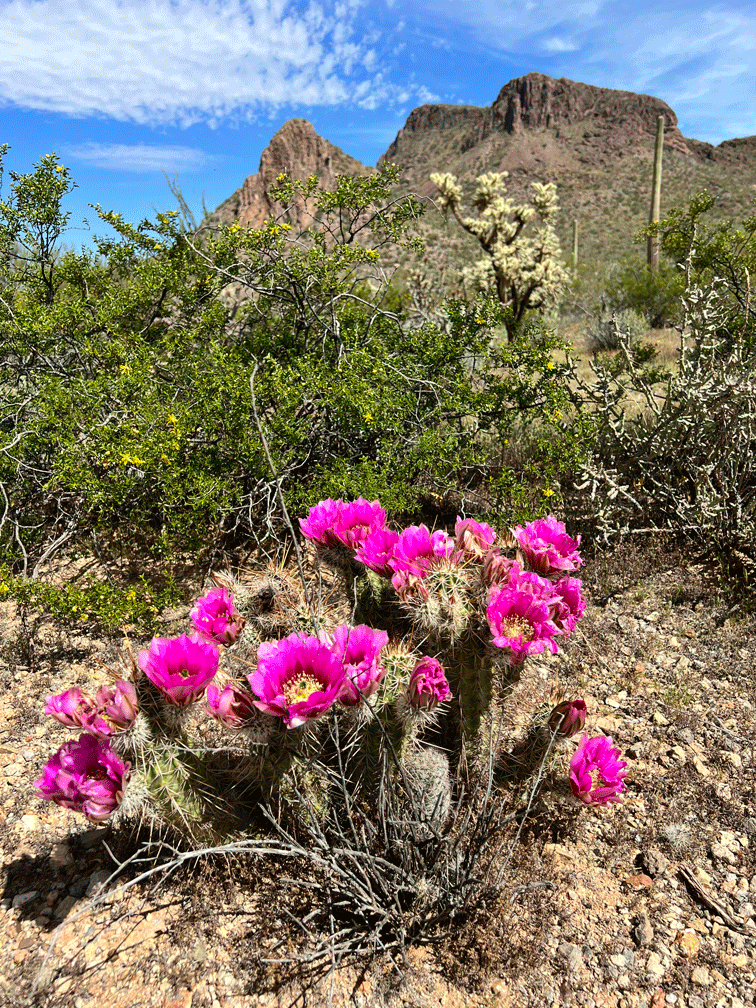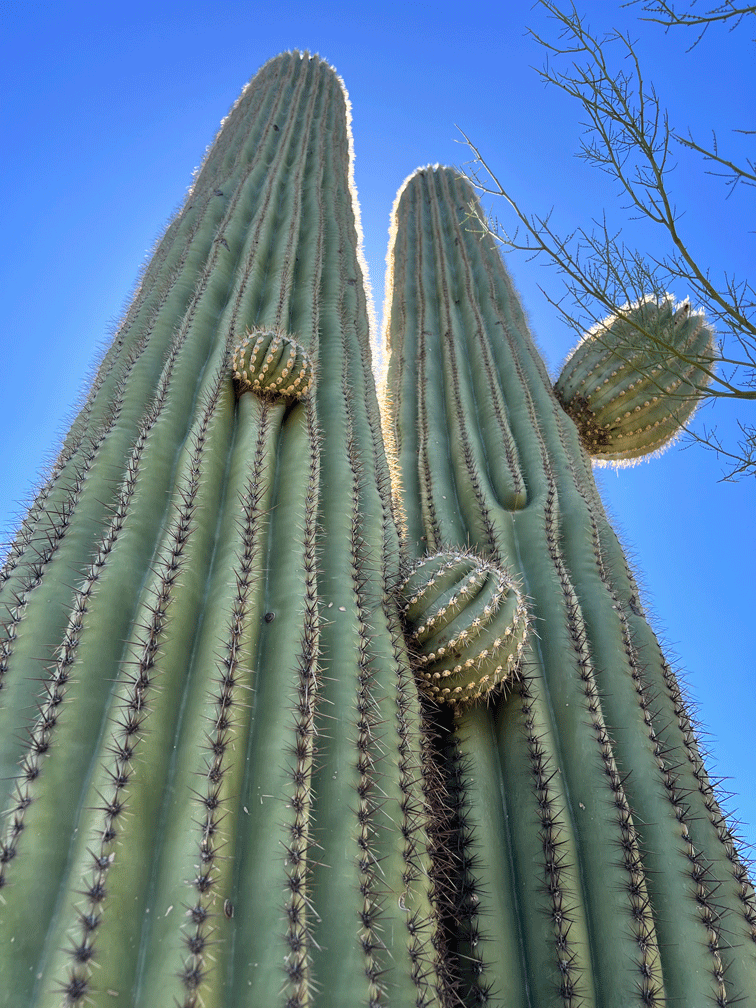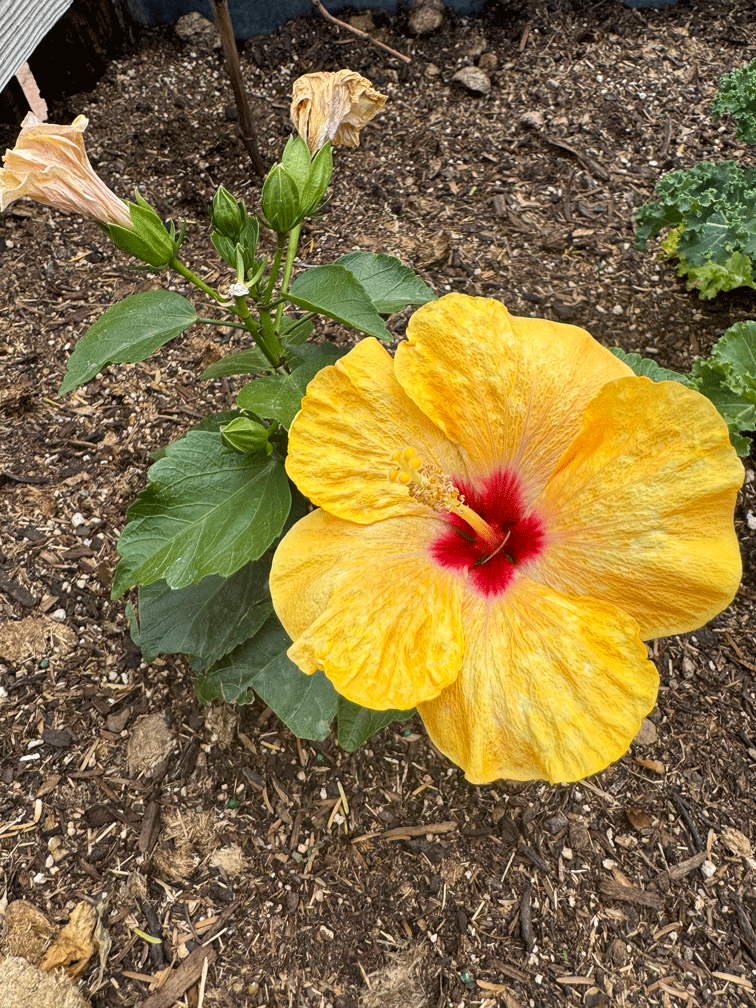Texas! Our friends were travelling to Texas for birding, so we decided to join them. Mary had done a lot of research on sites to visit and birds to see. Rich worked out our accommodations and our guided day. They had both been to the area the previous year and we appreciated their expertise.
For the first couple of days we were travelling separately. We stayed in Van Horn, Texas the first night. The next day, we got to the first birding site a few hours after Rich and Mary, and they told us where we could see our first target bird – the Black-capped Vireo. They saw it in the bushes near the entrance to South Llano River State Park in Kimble County.

First we heard the Black-capped Vireo singing, so we followed its progress as it flitted between the branches, mostly hidden. It perched in view for only a short time, and Doug was able to get this photo of our first “life bird” of the trip.

We also got a good view of a Woodhouse’s Scrub Jay in the meadow of wildflowers.
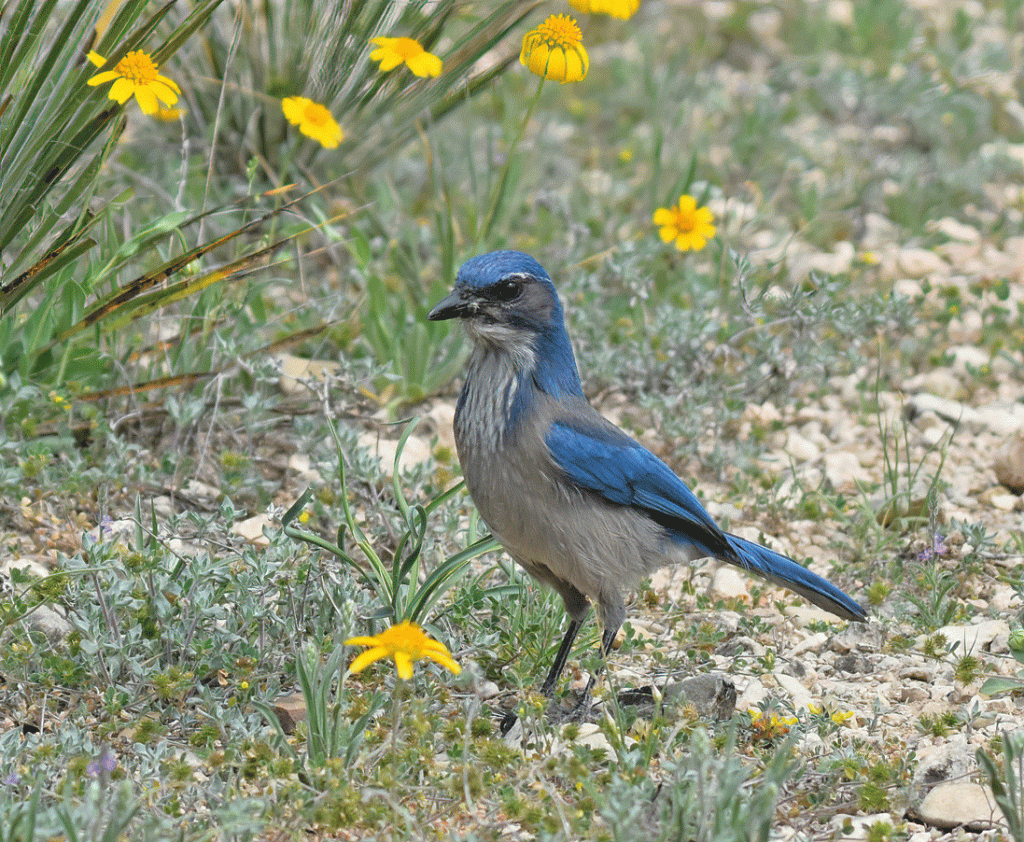
We stopped at a bird blind on the walk back to the truck and saw this Black-crested Titmouse looking a little disheveled after having a bath.
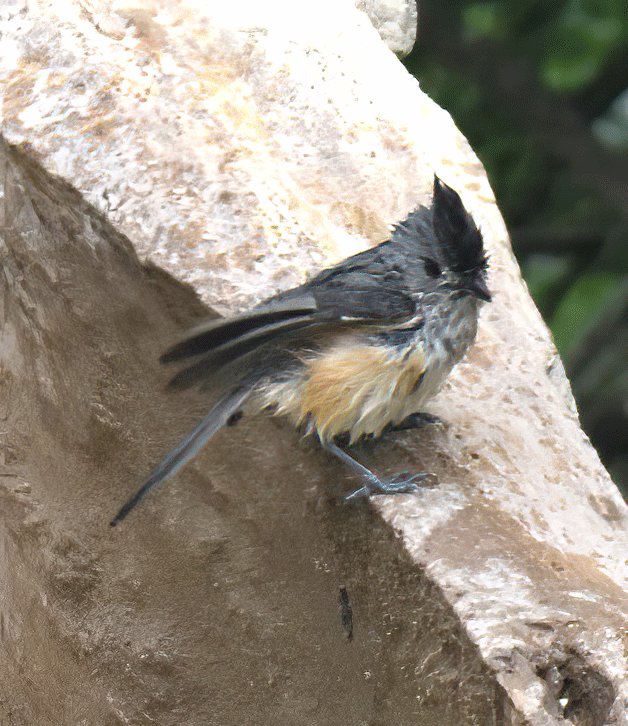
We drove next to Lost Maples State Natural Area in Bandera County. We crossed this creek on the East/West trail and saw our first ever Carolina Chickadee. It is nearly identical to a Black-capped Chickadee but the species have different ranges that only overlap in a small area.

We worked hard to get a good view of this White-eyed Vireo. We had seen the species once before but only for a fleeting moment. Later we walked up the East trail and got a glimpse of a Golden-cheeked Warbler, another bird that we had hoped to see.

We left Lost Maples about three in the afternoon and drove another four hours to Portland, which is just outside of Corpus Christi.
The next morning, we birded out of the wind beside the motel that our friends stayed at in Portland. We really got a good opportunity to work on our shorebird identification and get some good views since the birds weren’t that far away.
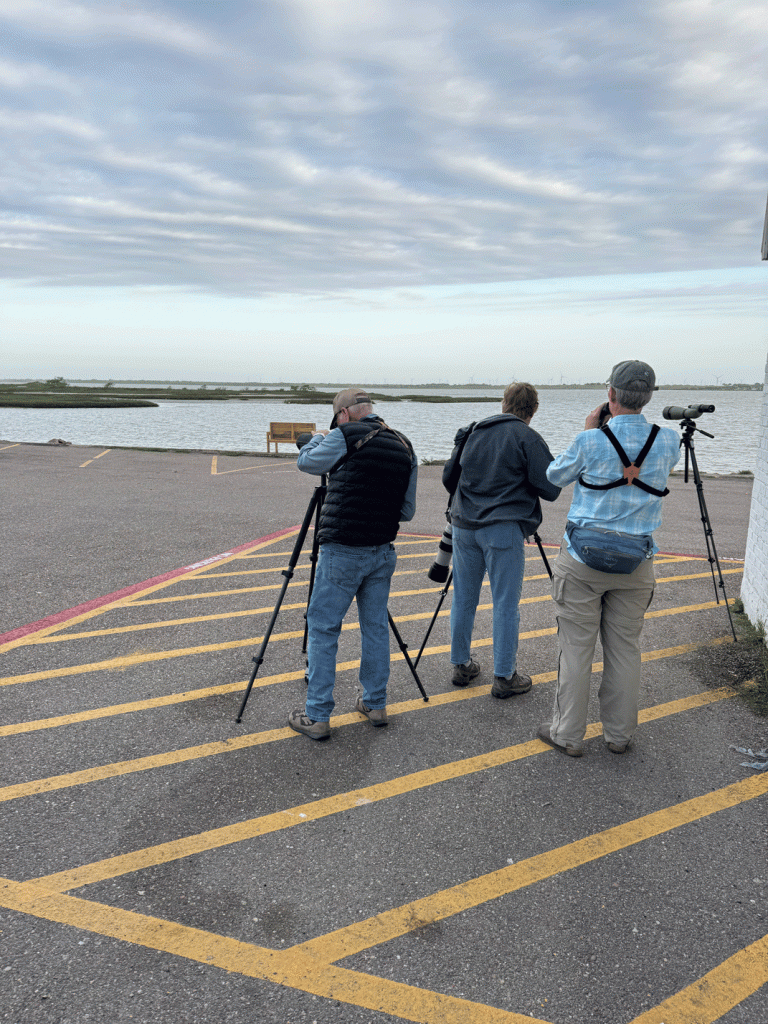
All of the following birds were visible from our sheltered position. This Marbled Godwit, winters on the Texas coast. It is still in non-breeding plumage so its breast is buffy, not “marbled” like it will be when it is at its summer breeding grounds in the Canadian prairies.
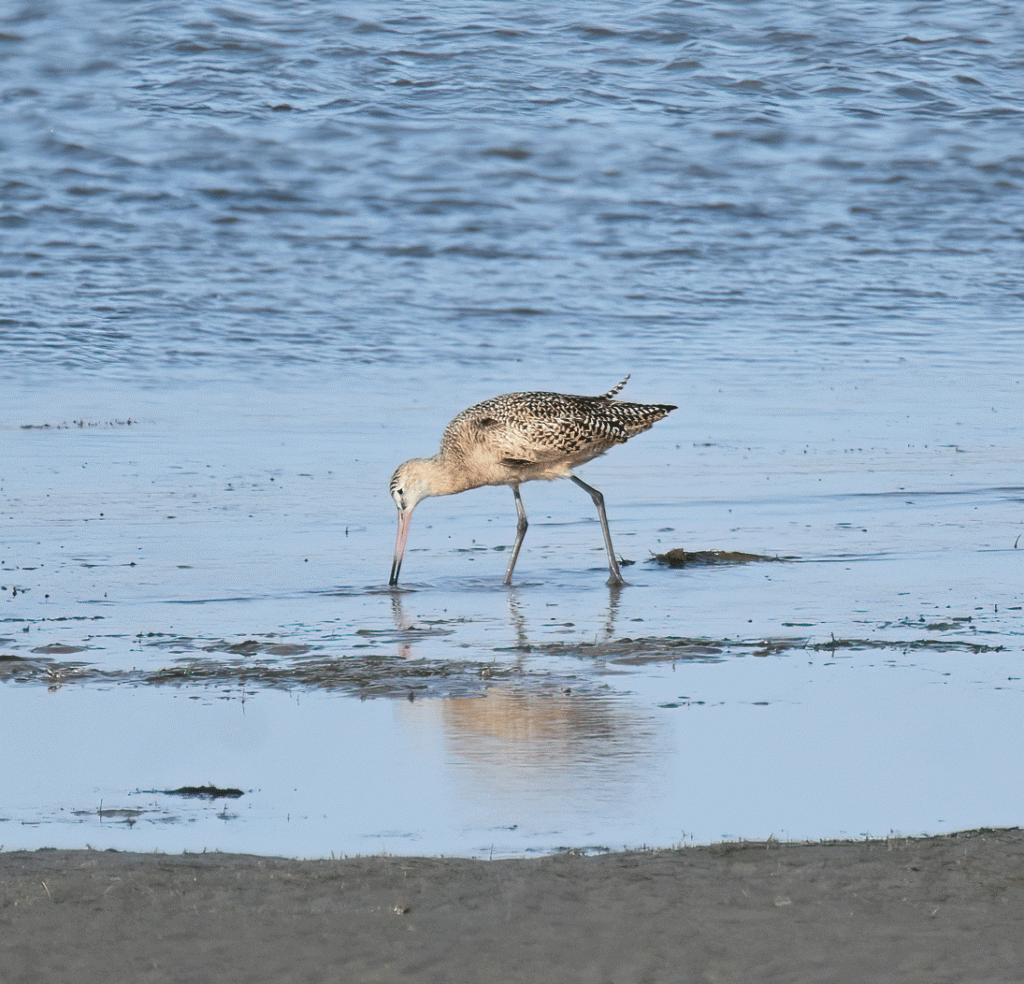
We saw the first of many Willets that we were going to see. It’s a drab-plumaged larger shorebird with a stout bill.
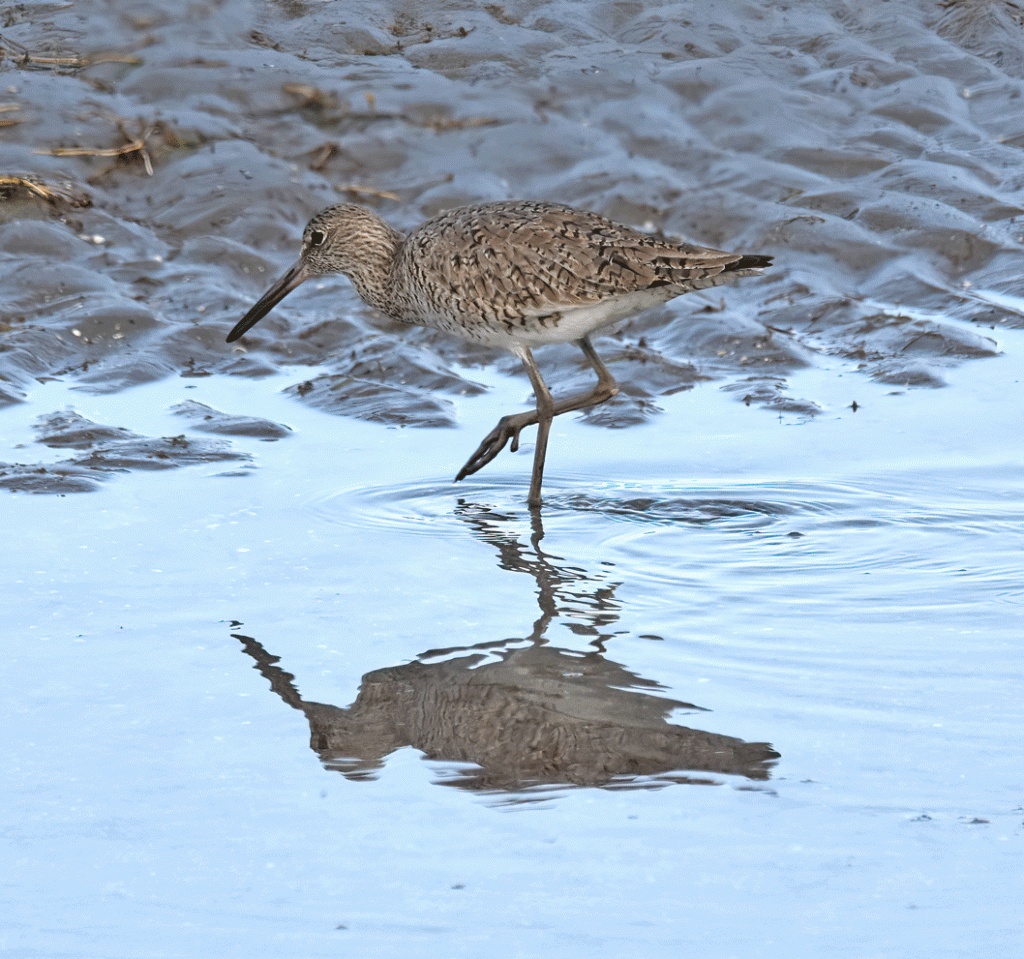
We like watching Ruddy Turnstones turn over rocks. Usually we see them foraging in the mud but this one is in shallow water. The species is a ruddy colour when in breeding plumage.
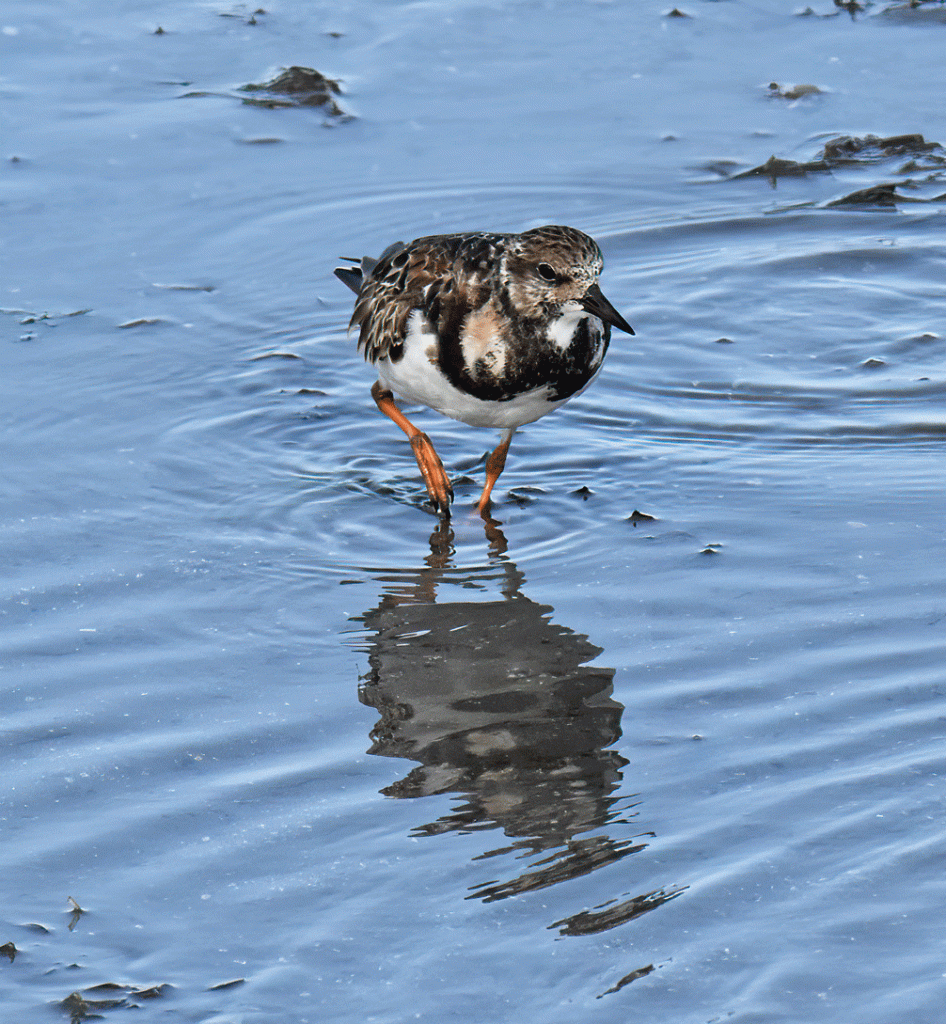
Here’s a pair of Laughing Gulls. They were the most common gull species that we encountered in Texas. We estimated that there were over 130 within our sight. They get their name from the sound of their call not their comical appearance.

Here are a couple of Forster’s Terns. The one on the right is likely a first winter individual, while the one on the left is showing breeding plumage and bill color.

We got a really good view of a Tri-Colored Heron. Its blue bill is the courtship color. Tri-colored Herons always have a dark breast and contrasting light belly.
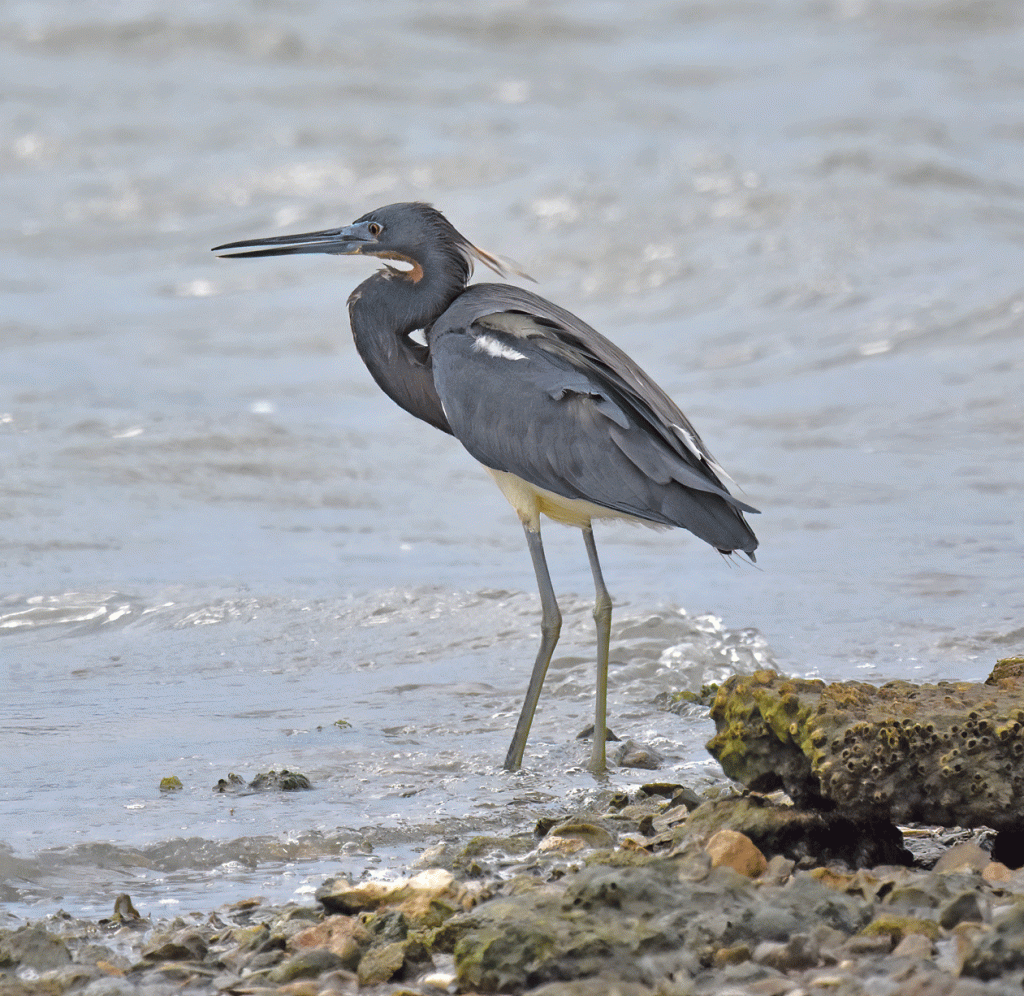
This was the first Reddish Egret that we had ever seen and we were glad that our friends could confirm the identification because it doesn’t look reddish at all. (It’s a white morph.) The bi-colored bill helps distinguish it from a Great Egret.

This adult White Ibis was easier to identify.

Just around the corner of the motel we saw our first ever sighting of an American Oystercatcher. Notice that it is banded.
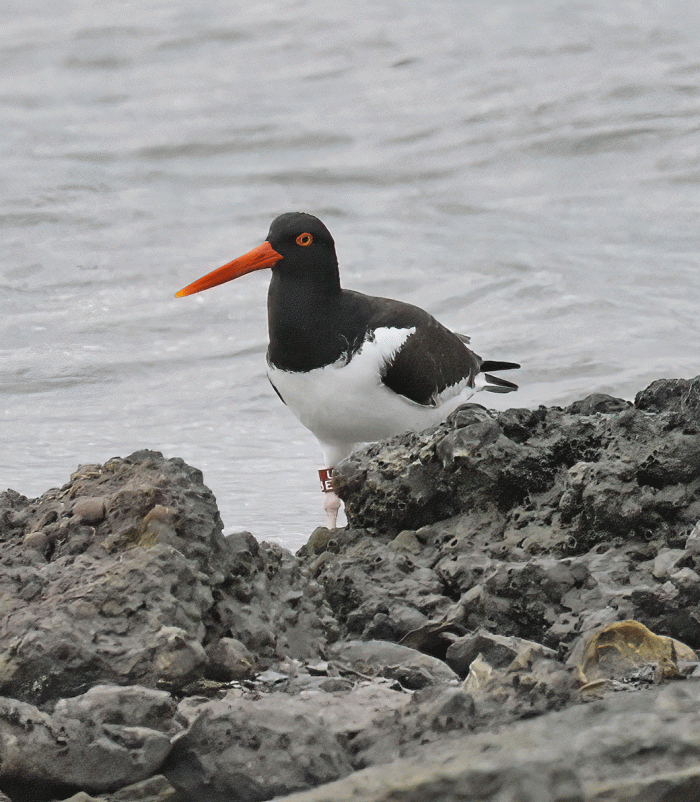
Our next stop was just a couple of minutes away at Indian Point Park – Nueces Co. marshes, where we saw more shorebirds.
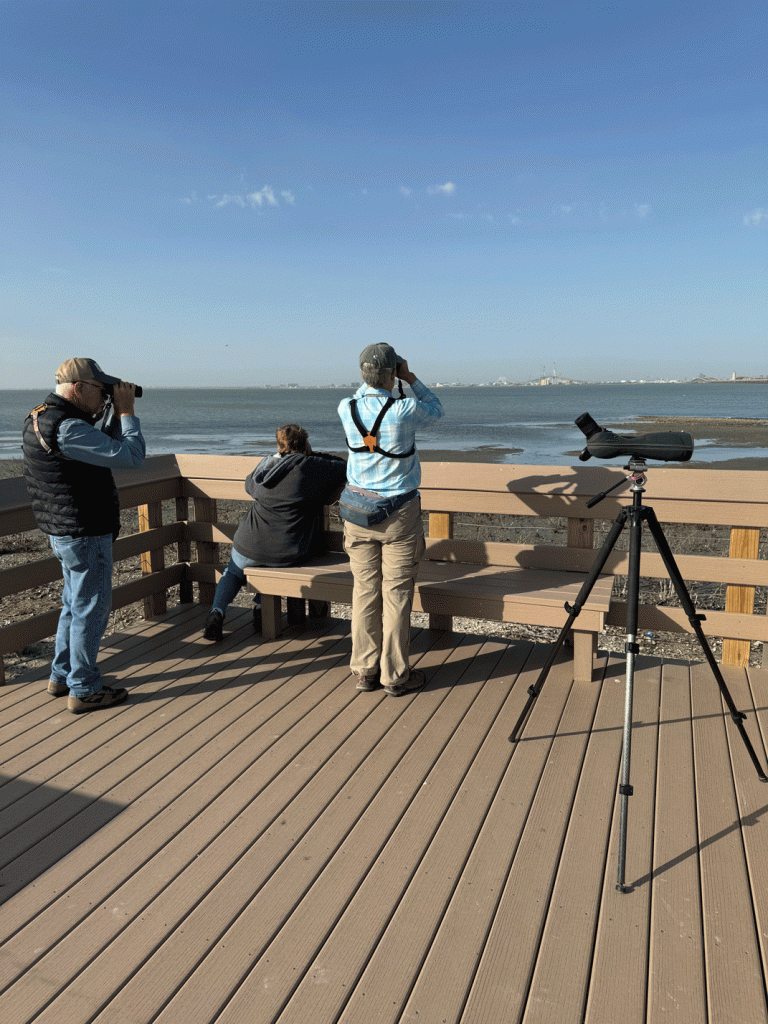
This little guy is a Semipalmated Plover. It’s a little smaller than a Killdeer and has only one breastband.
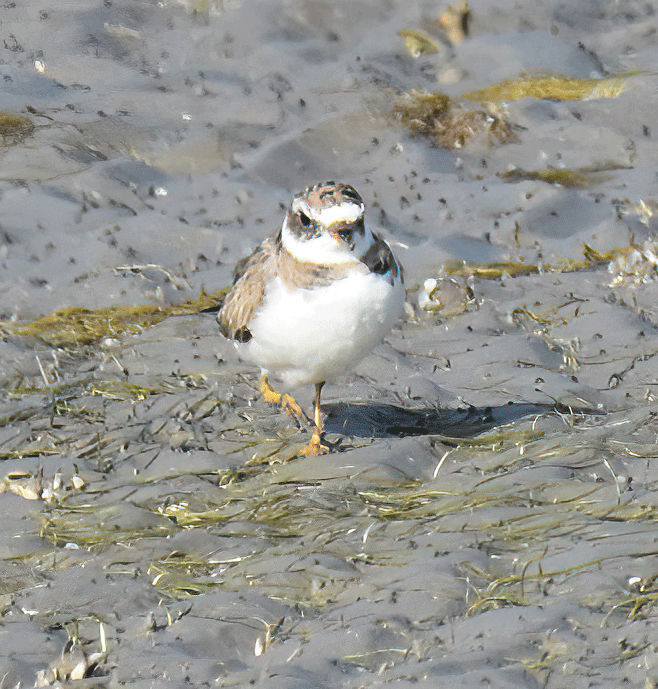
A Sanderling is a sandpiper that is a little bigger than a Semipalmated Plover. This one could be a female just coming into breeding plumage.
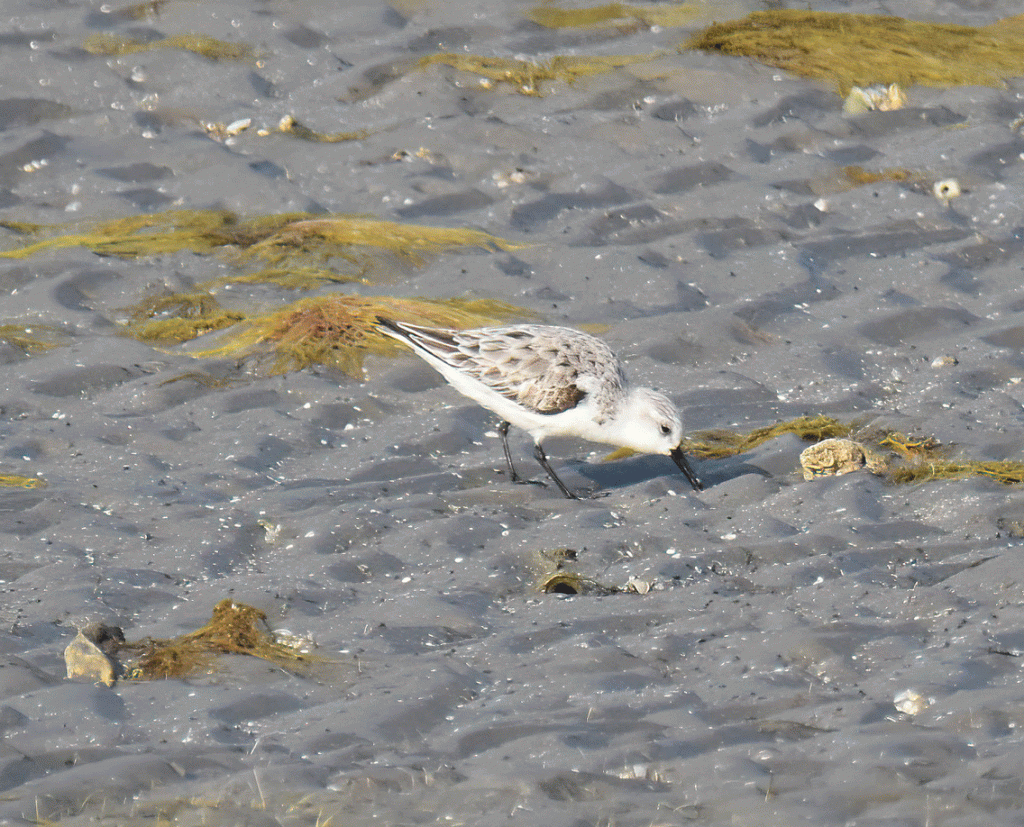
The smaller birds are Sandwich Terns. The key identifying feature is their black bill with yellow tip, since several species of terns have black heads. We also saw some “lifer” Least Terns (small terns with yellow bills) but they were too far out for a good photo.
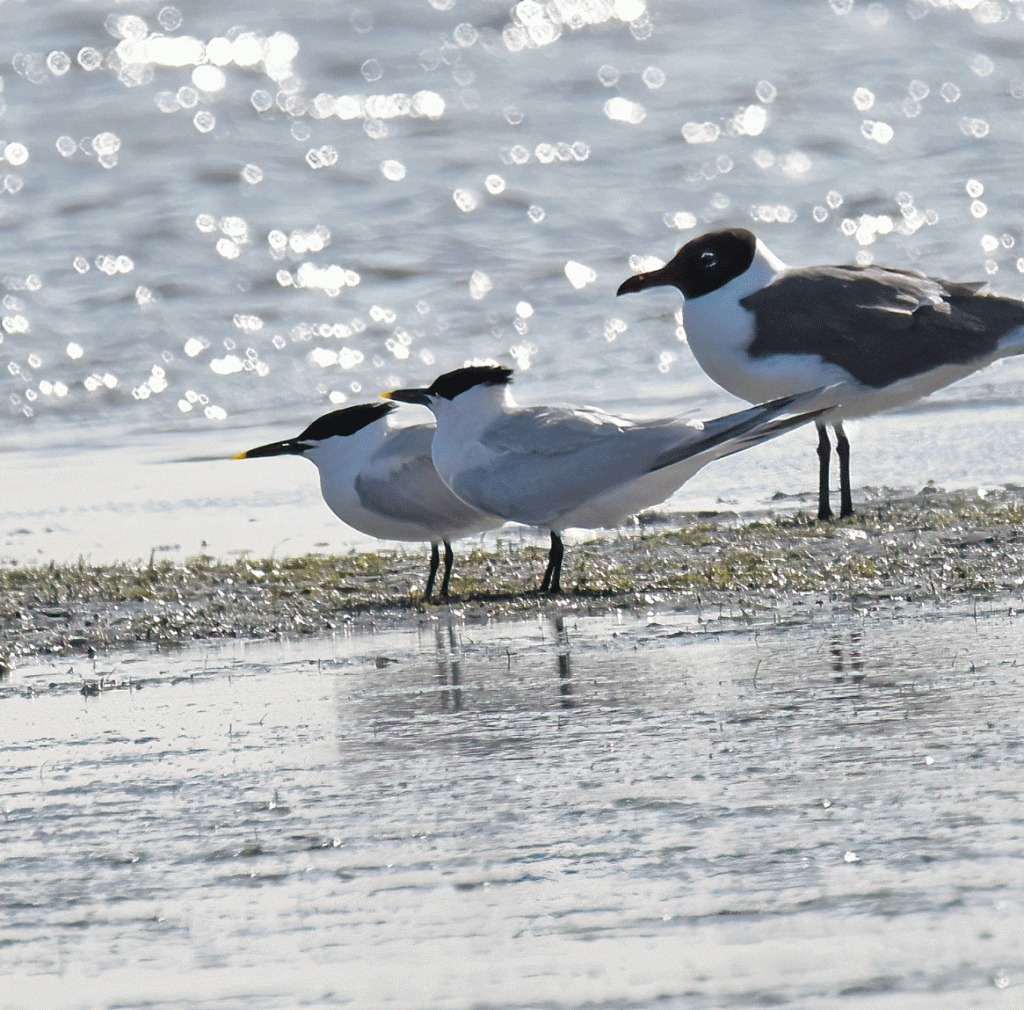
We’ve seen Roseate Spoonbills before but never in flight. When in flight, an adult spoonbill displays an orange tail.
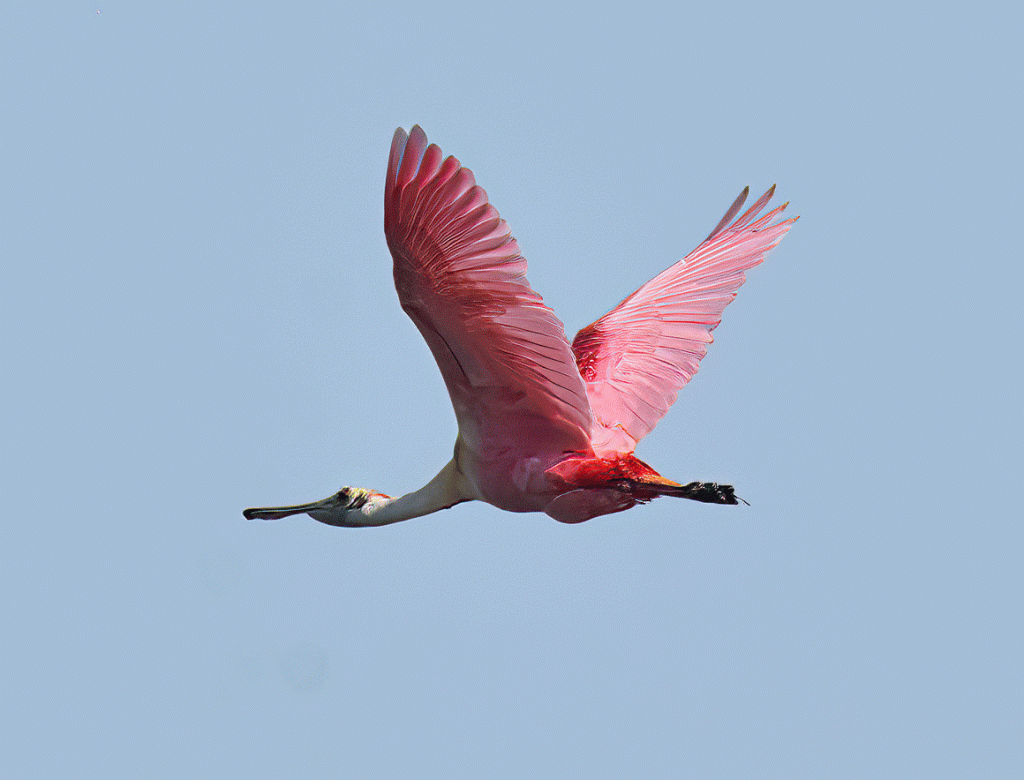
Next, we went to downtown Corpus Christi, to the parking lot of an oyster bar restaurant. At the back of the lot, there is an oyster recycling center. Oyster shells (or shucks) are collected and eventually returned to local waters to provide substrate to form new reefs and habitat for fish and crabs. An oyster shell reef is important in the lifecycle of an oyster because young larval oysters have no shell and prefer to settle on the shells of other oysters, and then begin building their own shells. This is all information that we learned after the fact. We were actually there to see a rare bird who kept coming back to the recycling area.
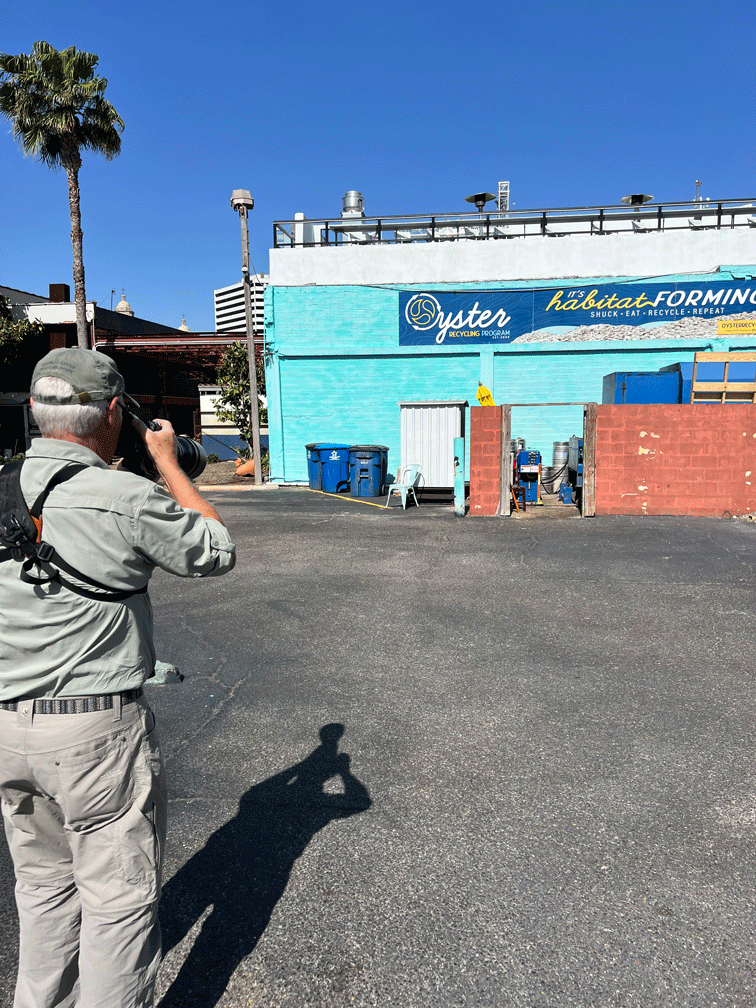
This is a Cattle Tyrant. You won’t find this bird in any field guide of North American birds because their normal home is in South America (Brazil, Venezuela, Columbia) where they forage on the ground near cattle herds. Before November of 2023, a Cattle Tyrant had never before been seen north of Panama. Did it get blown off course or come as a stow-away in a ship? It’s not telling, but it has stayed in the area for over four months, and is still being reported as this post is being written. Well over a thousand people have seen it and reported it on eBird. It’s our first “Mega Rarity.”
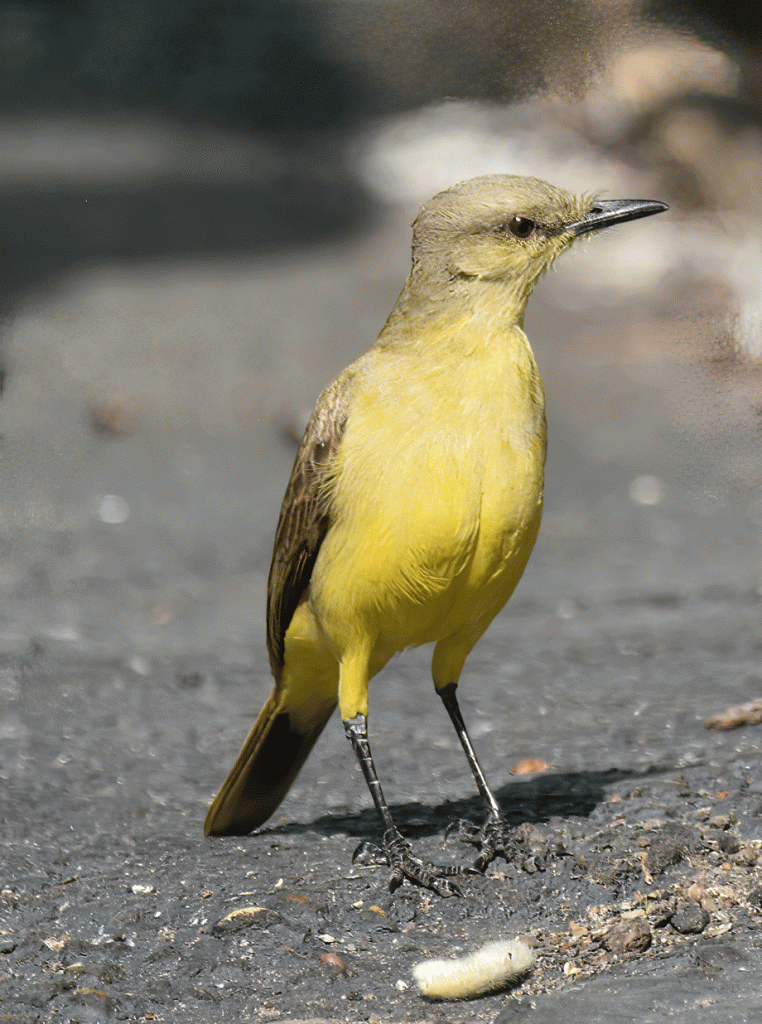
Our next location was just outside Laguna Atascosa National Wildlife Refuge. We saw an Aplomado Falcon and about 400 metres away on a nesting platform. The photo below was taken through our scope, so it is a bit fuzzy. Aplomado Falcons are found in Central and South America and used to be common in the dry grasslands of the US. They have been introduced into areas of south Texas, but are still considered endangered.

That afternoon we made it to our home for the next five nights at Bentsen Palm Village RV Resort. It was a great location, within walking distance of Bentsen-Rio Grande Valley State Park. We even did some birding on the grounds.
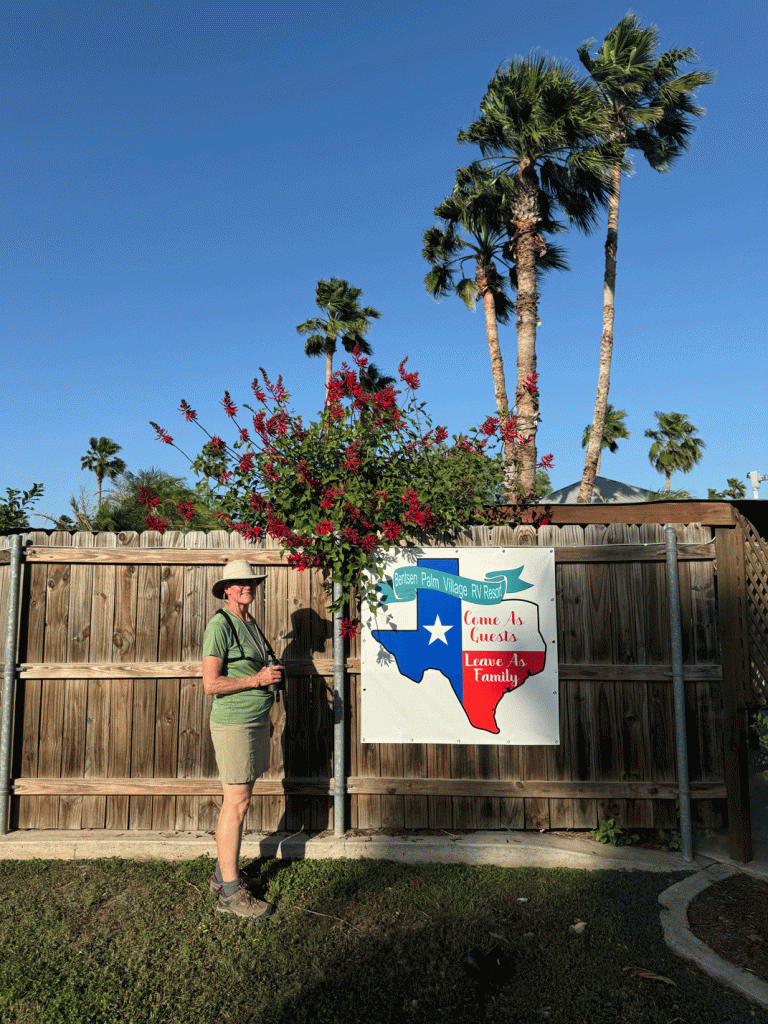
We were staying in a casita that was one of a pod of three, with one of our friends on one side and the other on the other side. We all shared the central backyard shaded table area. Most winter residents leave by March 31, so there was good availability and reduced rates.

Here’s a view of the kitchen and dining area taken from the living “room.” A bedroom and a bathroom rounded out the accommodations. We liked being able to prepare our own meals.

Whew! We saw a lot of birds in two days including eight species we had never seen before. This was a long post; the other parts won’t be quite as long. Look forward to Part 2, 3, 4 and 5 to be posted soon.




